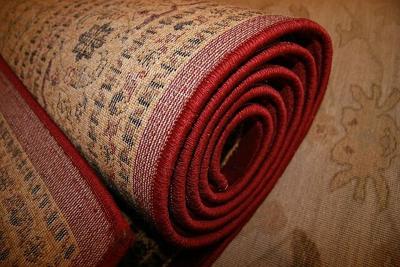
Do you want to buy rugs online for your home? A carpet that lives in the decoration of your home fits on your budget; and surprises your guests! If you spend a lot of time looking for rugs online or in the market, the term artisan rug must have passed around you. For those who don't know what it is and what kind of lag it is, making the final decision can be very difficult and confusing.
What is an ARTISAN rug?
Like other rugs, artisan rugs are part of the decoration, but they make much more sense than other regular mats. With the development of modern technology, everything, including the rug manufacturing process, has been automated. However, with the idea of preserving what it used to be, artisan rugs are manually made using ancient artistic techniques. It doesn't matter how many wigs the machine can produce. Owning an artisan rug means holding an ornament that has so much history and ancestry on it. So there is no doubt that they are one of the most preferred rugs for people.
What are the types of ARTISAN rugs?
Artisan rugs are limited and can only be made using a few selected types of materials. You can see that creating these rugs is practiced in places like Kashmir and Agra in India. There you can see rug artists working on carpets. The most common materials used for artistic rugs include silk, wool, cotton, linen, and leather. They are used independently or in a mixture like silk and wool to produce the best detail on floor rugs.
Originally from eastern countries such as Iran, Pakistan, Afghanistan, or Turkey, these types of rugs are made by hand, so they are unique and singular. Among these types of rugs are the valuable Persian rugs, generally made with wool or combining this material with silk threads, whose value is defined by the number of knots they contain on the reverse side.
1. Wool and cotton rugs
Coming from North Africa from countries such as Morocco, Tunisia, or Algeria, they are made manually by nomadic ethnic groups who, like the previous ones, make each of the pieces by hand. Their value is also established depending on the number of knots that they carry.
Among these varieties are the Gabbeh, made with wool sheepskin and goatskin, in plain tones, animal decoration, stripes, or abstract motifs, providing a more modern air to this type of designer rugs.
2. Classic rugs
Classic rugs are made of wool or polypropylene. They find their place in any room of the house and are very easy to maintain. Traditional rugs come in all colors and offer a wide variety of patterns. The classic carpet's advantage is that it is affordable and allows everyone to bring a decorative touch to its interior.
3. Shaggy rugs
Shaggy rugs are known as spaghetti rugs or Thick rugs. Their thickness varies from 3 to 7 centimeters. Very trendy in the 60s, the shaggy rug has never really disappeared from our homes. We love it for its comfortable and warm side. Shaggy rugs are made of wool or polyester. They are available in all colors, in matt as in gloss. Because it is not easy to maintain, it is advisable to place a shaggy rug in a living room or bedroom
4. Natural rugs
Today, rugs are also available in natural fibers. They bring warmth and a nice touch of authenticity to our homes. The most commonly used materials are bamboo, sisal, and seagrass. Ecological and easy to maintain, natural rugs are available in their original colors and bright colors. Because they are reliable, they can be found in the dining room and the office.
5. Carpets of the world
The carpet is a decorative element that we find in all countries. Also, it may be wise to choose rugs from around the world to work on its decoration. If you buy rugs online, you will see that the oriental carpet comes from India, Pakistan, or Iran. Each piece is unique and knotted by hand. The oriental carpet shines with its bright colors and the work around the designs. It will find its place in a classic, sober, or contemporary living room while bringing a little warmth and authenticity. Another rug globally: the Kilim rug, is native to southern Iran, but its production is also widespread in Turkey, India, and China. The Kilim rug is made of wool and cotton. It is reversible and very colorful.



(0) comments
We welcome your comments
Log In
Post a comment as Guest
Keep it Clean. Please avoid obscene, vulgar, lewd, racist or sexually-oriented language.
PLEASE TURN OFF YOUR CAPS LOCK.
Don't Threaten. Threats of harming another person will not be tolerated.
Be Truthful. Don't knowingly lie about anyone or anything.
Be Nice. No racism, sexism or any sort of -ism that is degrading to another person.
Be Proactive. Use the 'Report' link on each comment to let us know of abusive posts.
Share with Us. We'd love to hear eyewitness accounts, the history behind an article.